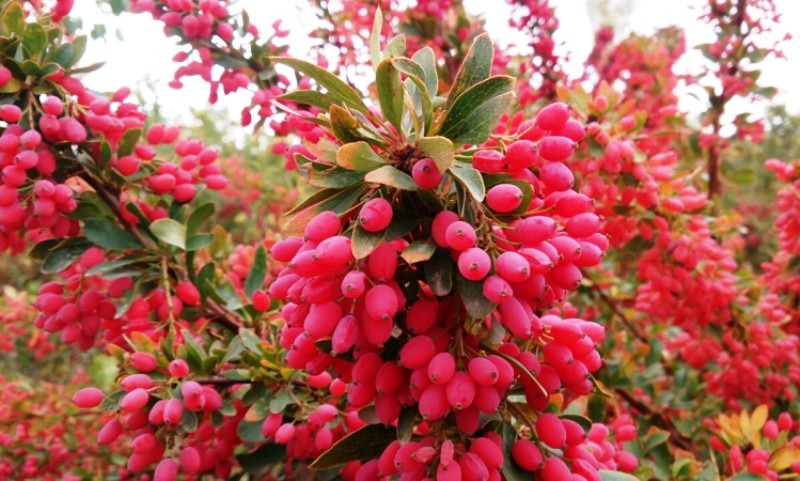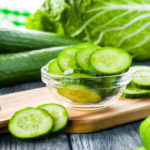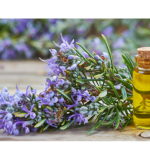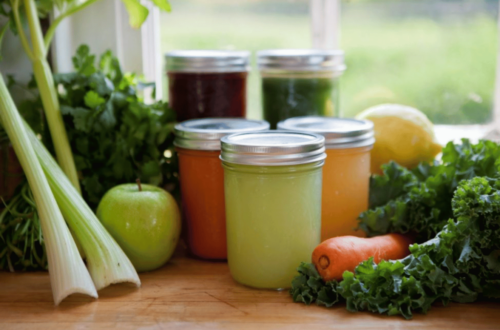Health Benefits of Berberis Vulgaris (Barberry)
Berberis vulgaris benefits are quite enormous with a higher barberine or berberine content notable for its indications in cases such as canker sores, diabetes, high cholesterol, diarrhea etc.
It is quite pleasant meeting this shrub in mountainous, dry place with its exquisite fruits which have cool flavor that can be enjoyed regardless of its sweet and sour taste that appears somewhere between.
Berberis vulgaris is a medicinal plant native to Europe and North Africa. Presently, it grows wild in some North American regions. In description, it is a thorny shrub of the Berberidaceae family having species with group of three to five thorns precisely on each knot. Flowers are yellow and oval with little purple or red berries that grow in clusters.
Berberis vulgaris bark of the trunk and its root is yellow in color which has been in use for dying wool and other certain fabrics. The part of the plant used for medicinal purposes are the bark of the root and also the berries.
SEE ALSO: Rosemary Herb Benefits
Properties and Indications of Berberis Vulgaris
Apart from the berries, the whole of this plant contain active alkaloid which seems poisonous. The bark of the root of berberis vulgaris or barberry is the part of the plant that is massively rich in barberine.
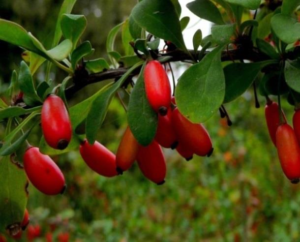
Berries of berberis vulgaris are used in making jams and jellies while the herbs are used as a remedy for disorders of the digestive system including heartburn, constipation, dyspepsia, diarrhea and even loss of appetite. There are some of the berberis vulgaris benefits.
Traditionally, it was believed to increase bile flow which is the reason why it is considered as a treatment of gallbladder and liver problems. Again, it was topically used to treat eczema, acne, psoriasis, minor wounds and other skin conditions.
Barberry Benefits and Medicinal Values
The bark of the root of barberry exerts positive effects on the gallbladder. As it promotes bile emptying to the duodenum, it gives improvement to bloated stomach and bile-caused dyspepsia.
One of the berberis vulgaris benefits is that the fruits of the barberry are recommended for fever which may have been caused by influenza or by certain afflictions.
They have the following properties and indications which among others include decrease in temperature and some invigorating properties.
Cholagogue and Digestive: As it promotes emptying of the bile, it helps reduce the congestion of the liver and even the bile system, thereby reducing bloated stomach. It is seen as a digestive tonic and also increases appetite.
Diuretic and febrifuge property: Especially infusion or decoction which can be prepared with about 40 grams of the root’s bark per liter of water. The effects are quite mild.
Laxative properties: One of the berberis vulgaris benefits is that it eases constipation which may have resulted due to insufficient bile secretion.
Berberis vulgaris benefits are massive because this plant is heart and circulatory invigorating. Traditionally used as a stimulant substance for febrile diseases.
Some other berberis vulgaris benefits include
- Presence of glucose and levulose, vitamin C, malic and citric acids which seem refreshing and ready to quench thirst.
- Barberry juice have laxative effects that is quite mild
- Barberry juice used to quench thirst of individuals with fever
Uses of Berberis Vulgaris
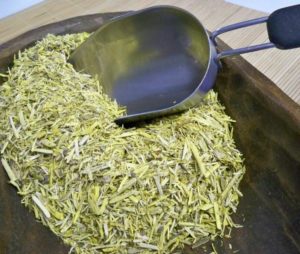
The most active compound in barberry (berberis vulgaris) is a phytochemical known barberine.
As it is, the alkaloids found in berberis vulgaris are present in the root, stem bark of the plant and the rhizome. Barberry or berberis vulgaris can be applied in cases of the following.
- Canker sores
- Diabetes
- Diarrhea
Canker sore: Studies conducted show that when a gel containing the phytochemical called barberine is applied, it can bring down the pain, oozing, redness and even the size of ulcers in individuals with canker sores.
Diabetes: Barberine in barberry is capable of reducing blood sugar level in individuals with diabetes. Another one among berberis vulgaris benefits is the favorable influence is has regarding cholesterol.
Therefore, one of the berberis vulgaris benefits is that it helps lower cholesterol level especially in individuals with high cholesterol.
Barberry may also foster fertility. Among the berberis vulgaris benefits is its capability in treating dyspepsia and diarrhea.
According to ncbi.nlm.nih.gov, it is traditionally used to treat infections of the ear, mouth and eye.
YOU MAY LIKE: Nasturtium Health Benefits
Preparation and Use of Berberis Vulgaris
Internal Use
- Decoction and infusion with about 40 grams of root’s bark per liter of water. Take three (3) cups a day which is the maximum dose.
- Jelly: Berberis vulgaris or barberries are used to prepare jellies and delicious ones for that matter.
- Barberry syrup can be made with mashed fruits. Then it should be strained and with sugar added so as to avoid fermentation.
Different ways to consume barberry
The following are the ways to consume barberry
- Raw (fresh) as berries
- Sauce
- Jelly
- Tea
- Tincture
- Capsule
- Tablet
- Ointment
- Dried herb.
Caution!
As a result of its content in barberine, an alkaloid like morphine, the bark of the root of berberis vulgaris must be used with caution and not going beyond the prescribed doses.
Barberry may cause diarrhea, vomiting, convulsion and drops in blood pressure, breathing and heart rate. Therefore, ensure that you consult a doctor before taking barberry.
Foods to Avoid for Heart Attack
Rheumatoid Arthritis Foods to Eat

A graduate of Computer Science and Information Management Technology. Diploma – Caregiving, Certificates – Dementia and Diabetes Awareness and Management. A researcher, blogger, songwriter, singer and acoustic guitarist. Born in an environment where natural talents such as healing are imparted at our natural birth. This natural talents of healing is the result of our genetic inheritance and the training from family environment.

